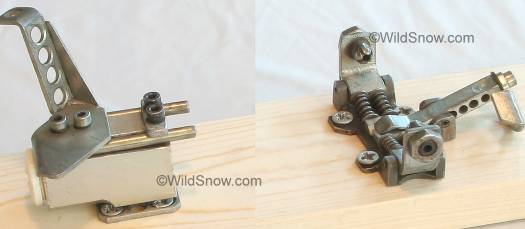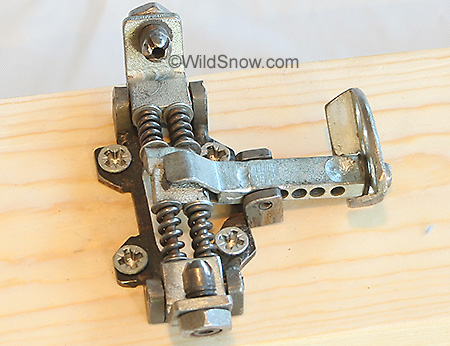Late 1980s First Production Low Tech (Dynafit)
Early ‘Dynafit’ bindings were first known as “Low Tech” and virtually hand made by inventor Fritz Barthel and his helpers in the basement workshop of their multi-generation family home in Austria. This is the first production model (Original prototype Dynafit tech ski touring binding.). Note the larger boot pins on the toe unit (right in photo below), as well as the heel release spring that was swapped out to change release. This heel spring design would remain in place for a number of years, until the mid 1990s when the current method of adjustable release tension was included in the heel unit.
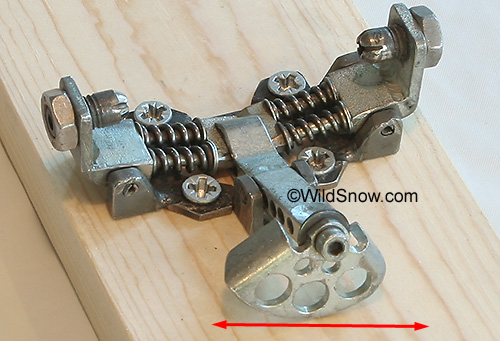
Another view of toe, from the front in closed and locked position. To lock the binding in touring mode you rotated the lobe shaped part on the front, which engaged the ski top surface and kept the binding from opening.
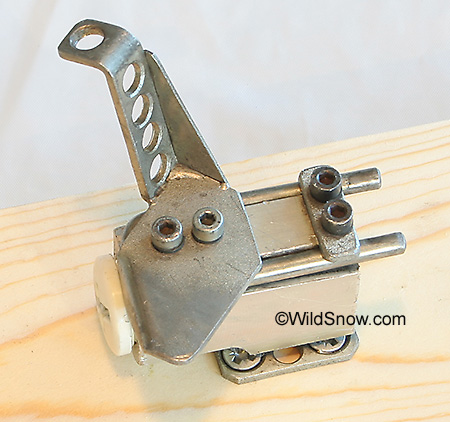
The heel unit had no fore/aft adjustment, so you had to mount it with care. Some modern race bindings use a similar type of base plate, to save weight.
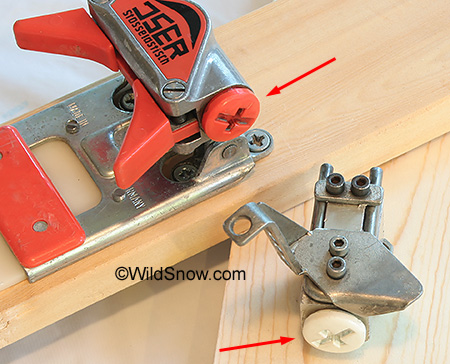
One fascinating aspect of this binding is how the heel torsional (sideways) release spring and cap were based on that of the Iser binding, as shown.
Weight: 11.6 oz, 328 gr (with screws)
It’s interesting to note the most popular bindings of this era, such as the Silvretta 404, were about three times heavier per binding. Considering that, it’s easy to see how the popularity of Dynafit and subsequent “tech” bindings was inevitable.
This binding was donated to the WildSnow.com collection by Fritz Barthel.
Original Dynafit retail binding 1986

Low Tech first production thumbnail.

